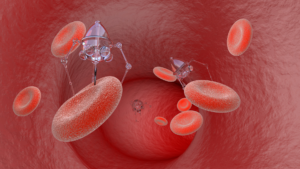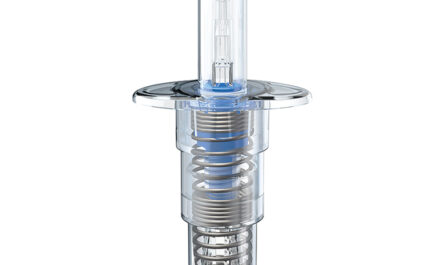
Nanorobots are miniature robots designed on the molecular scale and usually measured in micrometers or smaller. Unlike larger robots, nanobots are specifically engineered to operate at the nanoscale and perform functions that require precise manipulation and interaction at the molecular level. They have the potential to revolutionize medicine, manufacturing, and other industries by performing targeted tasks from within living systems or precisely assembling new materials and structures.
Medical Applications of Nanorobots
One of the most promising applications of nanorobotics is in medicine where swarms of nanobots could be used for targeted drug delivery, early disease detection, and minimally invasive medical procedures. Nanobots carrying precisely measured doses of drugs or genetic payloads could be programmed to identify and travel directly to diseased cells like cancer tumors for localized treatment. This “nanosurgery” approach could eliminate toxicity to healthy cells and minimize harmful side effects associated with traditional therapies. Nanosensors dispersed throughout the body could continuously monitor vital signs and biomarkers to detect abnormalities earlier than current diagnostic methods. Nanorobotic medical devices may one day replace needles and scalpels by precisely manipulating tissues and repairing injuries from within without requiring incisions or stitches.
Environmental Cleanup with Nanorobots
Like in medicine, nanotechnology could revolutionize environmental cleanup efforts through the use of tailored nanorobots. Swarms of nanobots could fully self-assemble at contaminated sites from basic components to break down pollutants like crude oil spills or industrial waste. They may incorporate waste materials into new benign components or transport them to dedicated processing facilities. Areas currently inaccessible to humans like deep ocean depths could potentially be cleaned using untethered nanorobotic systems. Nanobots may also aid in monitoring complex ecosystems, detect emerging threats, and help restore balance in sensitive environments impacted by climate change or other disturbances. By mimicking natural processes at the nanoscale, new self-healing technologies could make environmental sustainability and resilience a reality.
Nanorobotic Manufacturing and Construction
Precisely manipulating matter at the atomic scale is key to developing stronger, lighter, and multifunctional new materials. Complex 3D objects that would be nearly impossible with traditional techniques may one day be assembled from the bottom-up using nanorobots. Nanofactories carrying basic building blocks could self-organize into sophisticated manufacturing systems to churn out finished products. Swarms of nanorobots operating in tandem may “print” structures by precisely guiding microscopic components into place. This could revolutionize industries ranging from electronics and aerospace to construction and infrastructure development. Self-replicating nanorobotic systems may even establish off-planet outposts by autonomously harvesting local resources to build habitats and tools. The promise of molecular manufacturing opens up new frontiers in technology development.
Challenges on the Path to Realizing Nanorobotics’ Potential
While the possibilities presented by nanorobotics are exciting, major technological challenges still must be overcome before their full benefits can be realized. Current nanorobots are still relatively primitive compared to the vision of molecular machines that can self-replicate or operate with animal-level intelligence. Precisely programming the behavior of nanoscopic devices and enabling them to perform coordinated tasks adaptively remains an area of active research. Reliably powering and controlling untethered nanorobots within dynamic environments like living organisms also poses unique challenges. Ensuring these minuscule machines behave exactly as programmed without unexpected interactions or failures that could endanger health or ecosystems will require exhaustive testing and regulation as the field progresses. Continued breakthroughs in nanofabrication, sensing, actuation, and parallel computing are still needed to fully unlock nanorobotics’ potential for revolutionary applications.
*Note:
1. Source: Coherent Market Insights, Public sources, Desk research
2. We have leveraged AI tools to mine information and compile it


